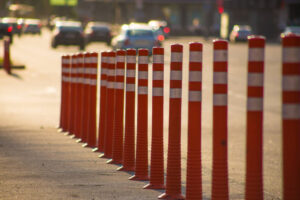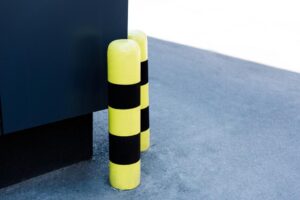In today’s fast-paced world, ensuring safety and security in public spaces is of paramount importance. One crucial element in achieving this goal is the effective use of steel bollard posts. These unassuming yet powerful structures play a vital role in protecting people, property, and infrastructure from various threats.

This article explores the significance of steel bollard posts, their features, applications, and the benefits they bring to public spaces.
- What are Steel Bollard Posts?
Steel bollard posts are sturdy vertical barriers made from high-grade steel. They are typically cylindrical or square in shape, anchored into the ground to create a physical barrier. These posts are designed to withstand substantial impact forces and provide protection against vehicle collisions, unauthorized access, and other potential threats.
- Features of Steel Bollard Posts
a. Durability: Steel bollard posts are known for their exceptional strength and durability. They are constructed from robust materials, such as stainless steel or carbon steel, which can withstand extreme weather conditions, corrosion, and impact.
b. Versatility: Steel bollard posts come in various sizes, shapes, and finishes, allowing for customization to suit different environments. They can be powder-coated or galvanized to enhance their aesthetic appeal and resistance to rust.
c. Impact resistance: Steel bollard posts are designed to absorb and redistribute impact forces, minimizing damage and protecting surrounding infrastructure. They are an effective solution to prevent accidental vehicle collisions, deliberate ramming attacks, or forced entry attempts.
d. Visibility: These posts can be equipped with reflective tapes, lights, or contrasting colors to enhance their visibility during low-light conditions, ensuring they serve their purpose as effective visual deterrents.

- Applications of Steel Bollard Posts
a. Pedestrian Safety: Steel bollard posts are commonly used in pedestrian areas such as sidewalks, crosswalks, and plazas. They create a physical separation between pedestrians and vehicles, preventing accidental collisions and providing a safe environment for pedestrians to walk.
b. Traffic Control: Bollard posts help regulate traffic flow by creating designated lanes, preventing illegal parking, and controlling vehicle access to restricted areas. They are commonly installed near driveways, parking lots, and sensitive locations like government buildings, airports, and embassies.
c. Anti-Terrorism Measures: In today’s world, the threat of vehicle-based attacks is a serious concern. Steel bollard posts are often deployed in high-security areas to protect against such threats. They provide a physical barrier to prevent vehicles from accessing sensitive locations, enhancing public safety and security.
d. Property Protection: Steel bollard posts are also used to protect valuable infrastructure and property from damage caused by accidental collisions or intentional ramming attacks. They safeguard storefronts, buildings, utilities, outdoor installations, and other critical assets.
- Benefits of Steel Bollard Posts
a. Safety: Steel bollard posts significantly reduce the risk of accidents and injuries by providing a physical barrier between vehicles and pedestrians. They create a clear visual boundary and discourage reckless driving, enhancing overall safety in public spaces.
b. Security: These posts act as a deterrent against unauthorized vehicle access, preventing potential criminal activities such as theft, vandalism, or terrorism. They serve as a proactive security measure, safeguarding people and property from harm.
c. Cost-effectiveness: While the initial investment in steel bollard posts may seem significant, they prove to be cost-effective in the long run. Their durability and low maintenance requirements ensure a long service life, reducing the need for frequent replacements or repairs.
Learn more at Wiki as well.